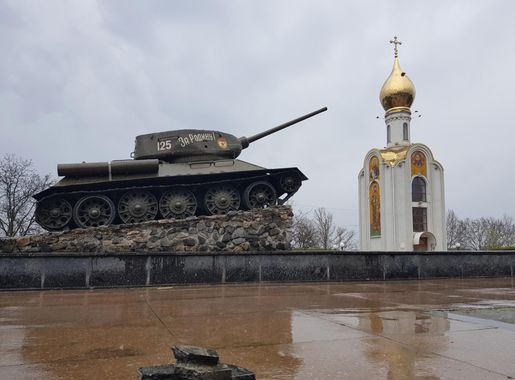
Tiraspol: A Journey Through Time in Moldova's Hidden Gem
Discover Tiraspol, Moldova's hidden gem, where Soviet nostalgia meets modern charm along the serene banks of the Dniester River.
Tiraspol, the capital of the self-proclaimed Pridnestrovian Moldavian Republic (Transnistria), offers a unique travel experience unlike any other. Nestled along the serene banks of the Dniester River, Tiraspol is a living museum of Soviet history and architecture. Visitors will find a city that feels frozen in time, with grandiose monuments, wide boulevards, and a palpable sense of nostalgia for the Soviet era. Explore the city's well-preserved Soviet landmarks, such as the towering statue of Lenin in the central square and the imposing House of Soviets. The city's rich history is also on display in the Tiraspol National History Museum, where you can learn about the region's past from ancient times to the present day. Don't miss the striking Kvint Cognac Distillery, a local institution that has been producing world-class spirits since 1897. Tiraspol's charm isn't limited to its historical sites. The city is home to a welcoming and hospitable community, eager to share their culture and traditions. Stroll along the picturesque riverbanks, visit local markets, and enjoy traditional Moldovan cuisine in cozy restaurants. Tiraspol is a city where the past and present coexist harmoniously, offering a truly immersive experience for any traveler.
Local tips in Tiraspol
- Bring local currency, as credit card acceptance can be limited in smaller establishments.
- Visit the Tiraspol National History Museum to gain a deeper understanding of the region's unique political status.
- Kvint Cognac Distillery offers guided tours and tastings—book in advance to secure your spot.
- English is not widely spoken, so learning a few basic phrases in Russian or Romanian can be very helpful.
- Public transport is limited; consider renting a car or hiring a local guide for easier navigation.
Tiraspol: A Journey Through Time in Moldova's Hidden Gem
Tiraspol, the capital of the self-proclaimed Pridnestrovian Moldavian Republic (Transnistria), offers a unique travel experience unlike any other. Nestled along the serene banks of the Dniester River, Tiraspol is a living museum of Soviet history and architecture. Visitors will find a city that feels frozen in time, with grandiose monuments, wide boulevards, and a palpable sense of nostalgia for the Soviet era. Explore the city's well-preserved Soviet landmarks, such as the towering statue of Lenin in the central square and the imposing House of Soviets. The city's rich history is also on display in the Tiraspol National History Museum, where you can learn about the region's past from ancient times to the present day. Don't miss the striking Kvint Cognac Distillery, a local institution that has been producing world-class spirits since 1897. Tiraspol's charm isn't limited to its historical sites. The city is home to a welcoming and hospitable community, eager to share their culture and traditions. Stroll along the picturesque riverbanks, visit local markets, and enjoy traditional Moldovan cuisine in cozy restaurants. Tiraspol is a city where the past and present coexist harmoniously, offering a truly immersive experience for any traveler.
When is the best time to go to Tiraspol?
Iconic landmarks you can’t miss
Suvorov Monument
Explore the Suvorov Monument in Tiraspol, a stunning historical landmark that celebrates Moldova's rich military heritage amidst beautiful gardens and vibrant culture.
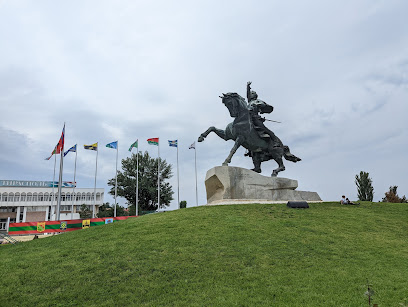
Monument to Aviators
Explore the Monument to Aviators in Tiraspol, a historical landmark honoring aviation heroes amidst beautiful gardens.
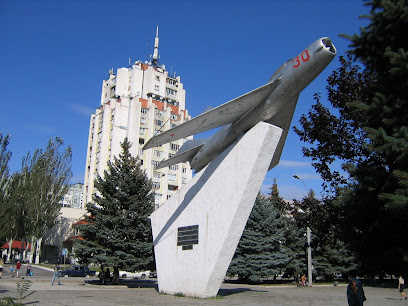
60 Years of October Square
Discover the serene beauty and cultural richness of 60 Years of October Square in Tiraspol, a perfect spot for relaxation and exploration.
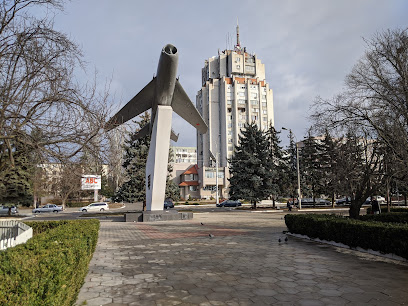
Tank Monument
Explore the Tank Monument in Tiraspol, a historical landmark honoring military valor amidst serene park surroundings.
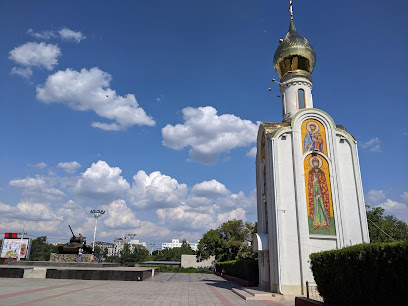
Victory Park
Explore the tranquility and historical significance of Victory Park in Tiraspol, a perfect retreat for nature lovers and history enthusiasts alike.

Ruinele Cetății de Tiraspol
Discover the ancient Ruins of Cetățuia de Tiraspol, a historical landmark that reveals the rich heritage and captivating stories of Moldova.
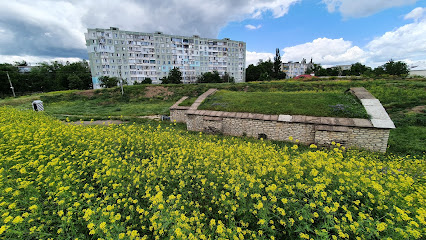
The Christmas/Nativity Cathedral
Discover the serene beauty and rich history of the Christmas/Nativity Cathedral, a stunning Russian Orthodox church in Tiraspol.
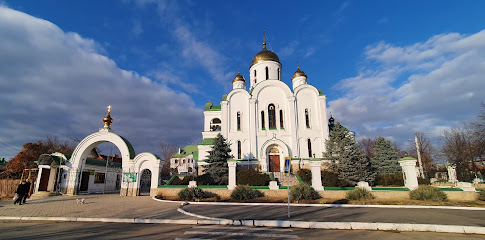
The Monument to the Liberators of the City
Explore the historic Monument to the Liberators of the City in Tiraspol, Moldova, a tribute to bravery and a remarkable piece of local heritage.
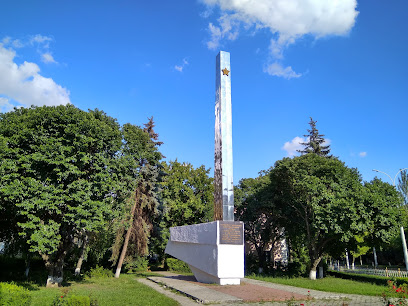
Lenin Monument
Discover the towering Lenin Monument in Tiraspol, a significant landmark reflecting the region's Soviet heritage amidst vibrant local culture.
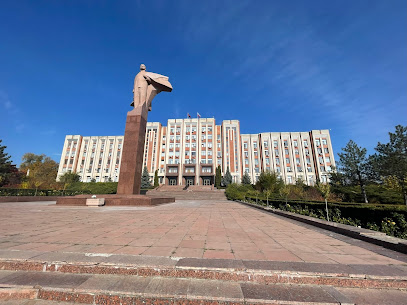
Monument to Kotovsky
Discover the Monument to Kotovsky in Tiraspol, a captivating tribute to Moldova's revolutionary history surrounded by beautiful gardens.
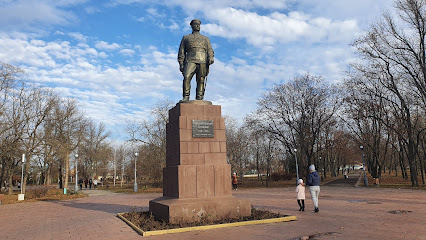
Zelinsky Museum
Explore the Zelinsky Museum in Tiraspol for an enriching experience of Moldova's artistic heritage and cultural history.
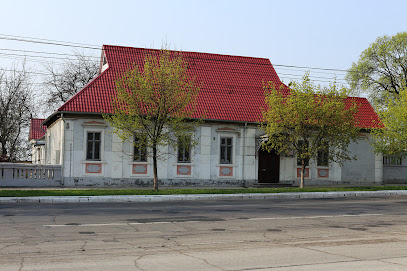
Catherine the Great Monument
Explore the rich history of Tiraspol at the Catherine the Great Monument, a stunning tribute to one of history's most powerful women.
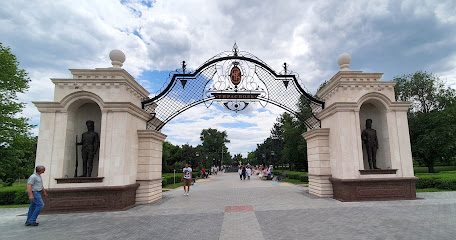
The Memorial of Glory
Explore the Memorial of Glory in Tiraspol, Moldova - a serene tribute to bravery and resilience amidst beautiful landscapes.

Harry Potter Monument
Experience the magic of the Harry Potter Monument in Tiraspol, where fantasy comes alive in a captivating tribute to the beloved series.
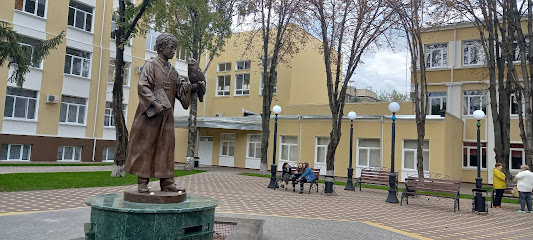
Lenin Monument of Dom Sovietov
Discover the Lenin Monument of Dom Sovietov in Tiraspol, a powerful symbol of history and culture in Moldova's unique Transnistria region.
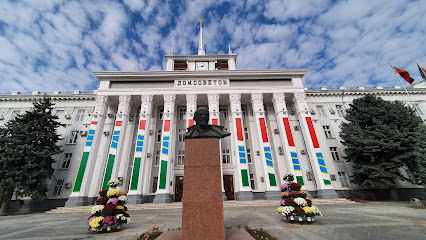
Unmissable attractions to see
Castel Mimi
Discover Castel Mimi, a stunning winery and castle in Moldova, where exquisite wines and rich history meet in a picturesque setting.

De Wollant Park
Experience the beauty of nature and local culture at De Wollant Park in Tiraspol, Moldova's serene urban retreat, perfect for relaxation and exploration.
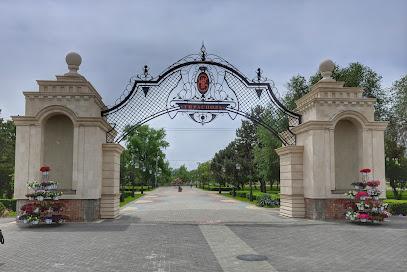
Tighina Fortress
Discover the rich history and stunning architecture of Tighina Fortress in Bender, Moldova, a must-visit for culture and history enthusiasts.
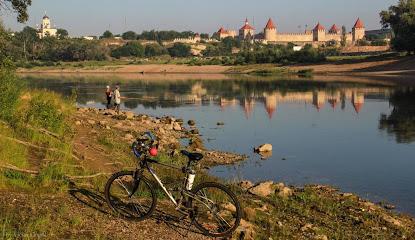
Sheriff Sports Complex
Discover the excitement of local sports at Sheriff Sports Complex in Tiraspol, Moldova, where thrilling matches and vibrant atmosphere await.
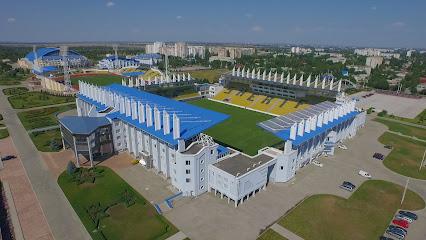
National Botanic Garden
Explore the lush landscapes and diverse plant life of the National Botanic Garden in Tiraspol, a serene escape for nature lovers and families.
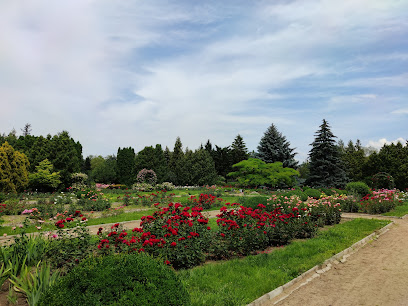
Noul Neamt (Chitscani) Monastery
Discover the serene beauty and spiritual heritage of Noul Neamt Monastery in Moldova, a must-visit destination for peace and inspiration.
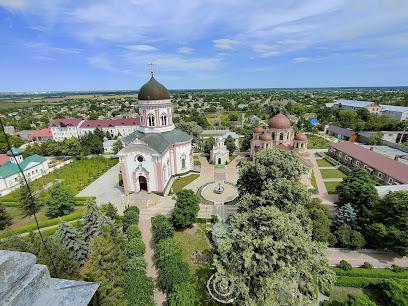
Republic's Palace
Discover Tiraspol's cultural heartbeat at the Republic's Palace, a stunning venue for art, music, and rich historical experiences.
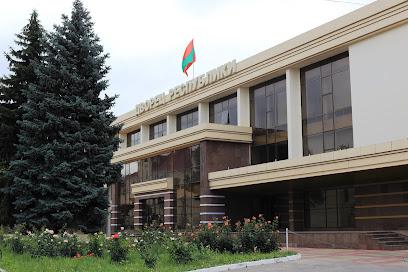
Victory Park
Explore the tranquil beauty and cultural richness of Victory Park in Tiraspol, Moldova, a perfect destination for nature lovers and history enthusiasts alike.
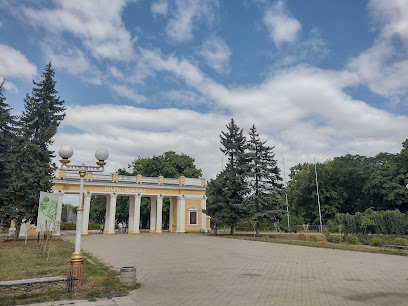
Ruinele Cetății de Tiraspol
Explore the enchanting ruins of Cetății de Tiraspol, a historical landmark that unveils Moldova's rich heritage and stunning architecture.
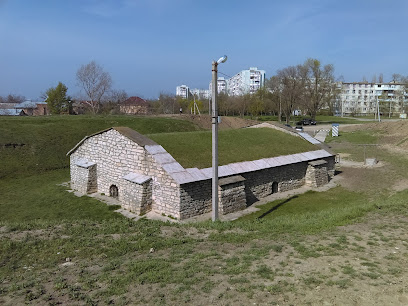
Catherine the Great Park
Explore the serene beauty of Catherine the Great Park in Tiraspol, Moldova—an urban oasis filled with lush gardens and rich cultural history.
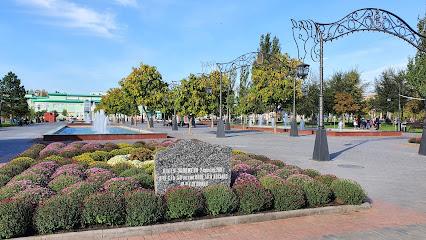
KVINT Wine & Cognac Distillery
Discover the art of Moldovan winemaking at KVINT Wine & Cognac Distillery, a historic gem in Tiraspol offering tastings and tours.
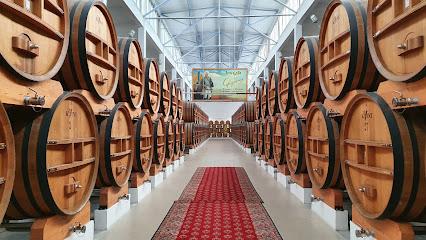
Museum of Local History
Explore the Museum of Local History in Tiraspol for a deep dive into Moldova's rich cultural heritage and fascinating local stories.
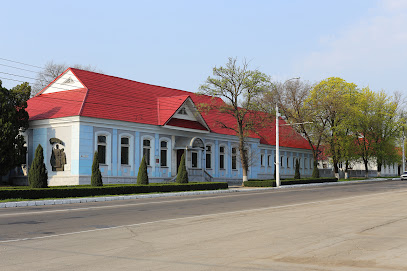
Aquatir
Experience sustainable fish farming and nature's beauty at Aquatir, Tiraspol's premier aquaculture destination for tourists and nature lovers alike.
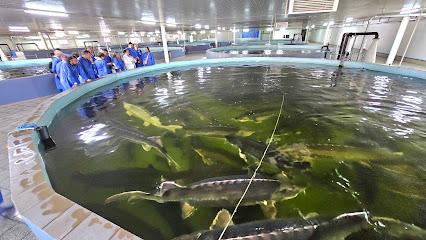
Zelinsky Museum
Discover the rich cultural heritage of Moldova at the Zelinsky Museum, Tiraspol's premier destination for art and history enthusiasts.
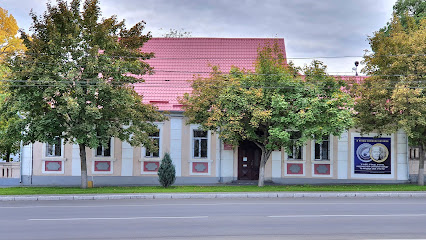
Harry Potter Monument
Explore the magic of the Harry Potter Monument in Tiraspol, a unique tribute to the wizarding world that captivates fans and visitors alike.
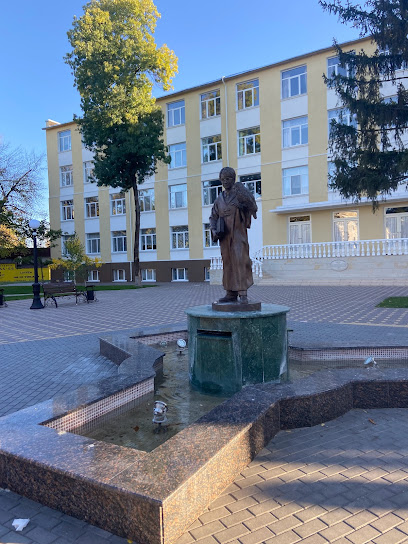
Essential places to dine
Toscana
Experience authentic Italian flavors at Toscana in Tiraspol – where culinary excellence meets warm hospitality.

La Plăcinte
Discover authentic Romanian flavors at La Plăcinte in Tiraspol - a culinary journey through Moldova's rich traditions.
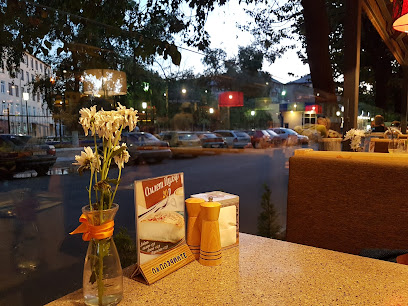
Dolce Vita
Discover the sweet side of Tiraspol at Dolce Vita – where every bite is a delightful escape into dessert paradise.
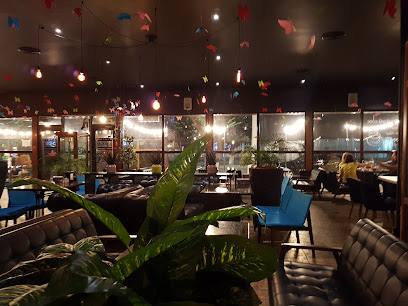
CRAFT
Discover CRAFT Gastropub: A Tasteful Fusion of Local Flavors and Craft Beers in Tiraspol's Lively Atmosphere.
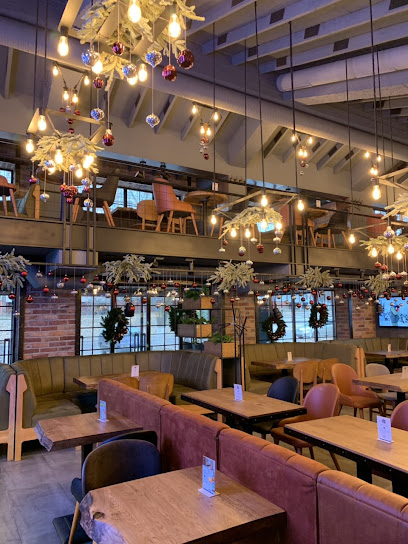
Кафе Royal Club
Discover Café Royal Club in Tiraspol – where delightful flavors meet cozy ambiance for an unforgettable dining experience.
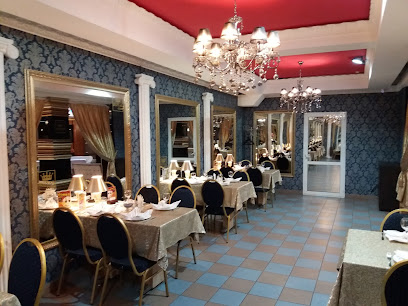
Мафия
Discover the vibrant culinary scene at Мафия in Tiraspol – where delicious flavors meet a lively atmosphere.
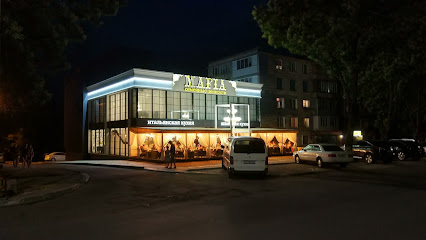
Kumanek Restaurant
Experience authentic Moldovan cuisine at Kumanek Restaurant in Tiraspol - a culinary journey through local flavors.
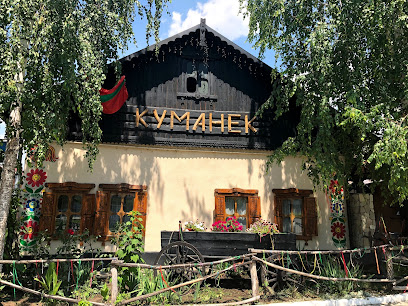
Nice shawarma
Experience authentic Moldovan street food at Nice Shawarma in Tiraspol – where every bite tells a story.

Мегагриль
Discover a delightful blend of Moldovan and international cuisine at Мегагриль in Tiraspol, where every meal is an unforgettable experience.
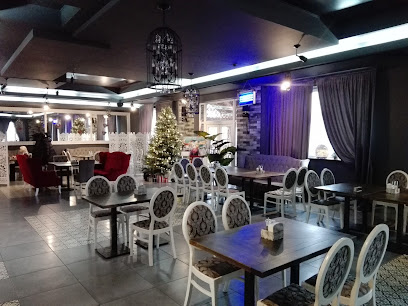
Cricova
Discover Cricova: A culinary haven in Tiraspol offering exquisite local dishes and an extensive wine selection.
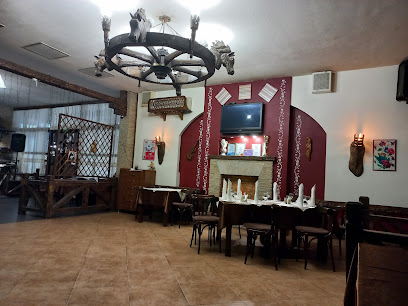
Ла Токанэ
Experience authentic Moldovan flavors at La Tokana - a cozy country food restaurant in Tiraspol offering delightful dishes and local wines.
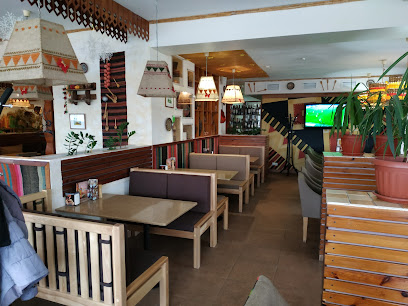
La Vida
Experience authentic Moldovan flavors at La Vida, Tiraspol's premier dining destination blending tradition with modern culinary artistry.
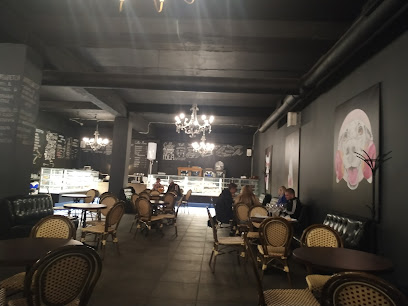
Borodino
Experience authentic Moldovan cuisine at Borodino in Tiraspol—a must-visit restaurant for every food lover exploring Moldova.
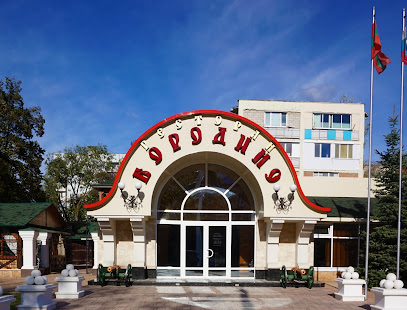
Villa Rich
Discover the authentic taste of Moldova at Villa Rich – Tiraspol's finest restaurant offering traditional dishes in a cozy setting.
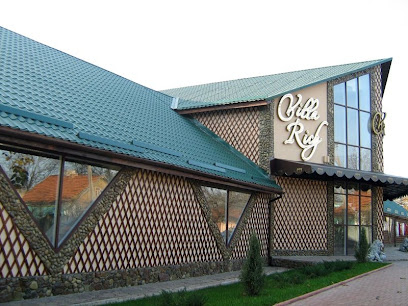
Love Сafé
Experience exquisite dining at Love Café in Tiraspol - where Moldovan tradition meets modern culinary art.
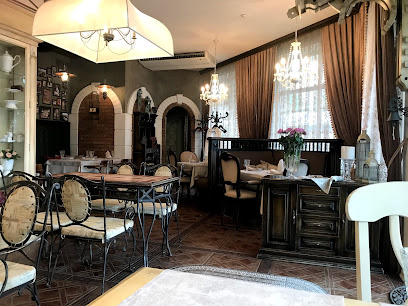
Markets, malls and hidden boutiques
5 карманов
Explore Tiraspol's fashion scene at 5 Карманов, a premier clothing store offering trendy styles and unique local designs.
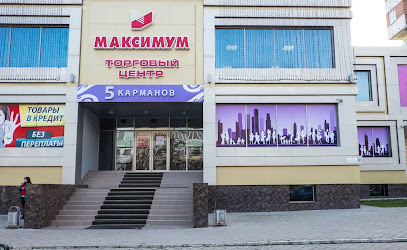
Orion
Explore Orion in Tiraspol, Moldova - a vibrant shopping mall combining retail, dining, and entertainment for an unforgettable experience.
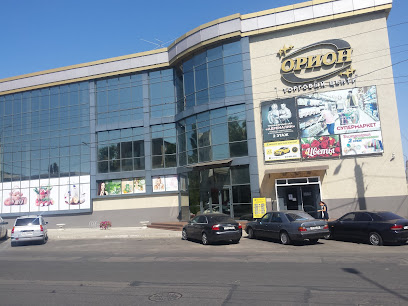
Tiraspol Shopping Center
Explore, shop, and dine at Tiraspol Shopping Center, the cultural and retail heart of Tiraspol, Moldova.
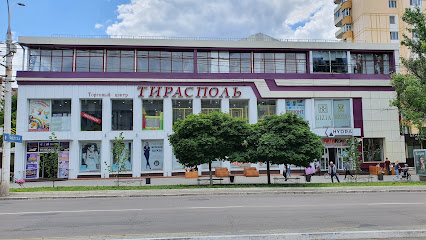
Assol Shop
Experience the vibrant local shopping culture at Assol Shop, Tiraspol's premier destination for fresh produce and local delicacies.
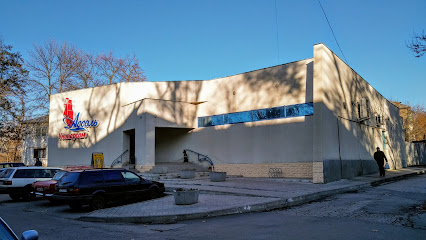
KVINT Market
Explore KVINT Market in Tiraspol, Moldova, your go-to destination for exceptional local and international wines in a welcoming atmosphere.
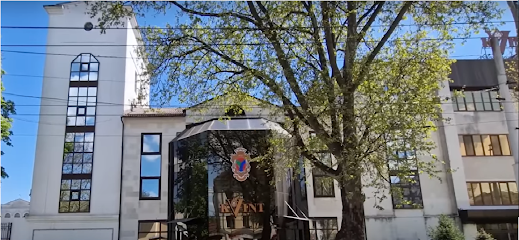
Perekrestok
Explore Perekrestok in Tiraspol for a taste of Moldova's freshest local produce and culinary heritage, all in a vibrant grocery store setting.
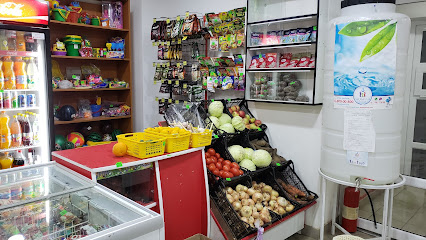
Nord магазин одежды Тирасполь
Explore trendy styles and unique Moldovan fashion at Nord Clothing Store in Tiraspol, where every piece tells a story.

МАК | Магазин Авторского Креатива | Купить подарок, Тирасполь
Explore the artistic heart of Tiraspol at МАК, your ultimate destination for unique souvenirs and creative gifts.
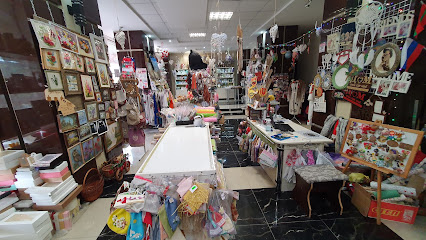
Фирменный магазин ИнтерЦентрЛюкс
Discover contemporary fashion in Tiraspol at Фирменный магазин ИнтерЦентрЛюкс, where style meets local culture.

kupi-tut.net
Explore Tiraspol's unique women's clothing boutique, where local charm meets contemporary fashion in a delightful shopping experience.
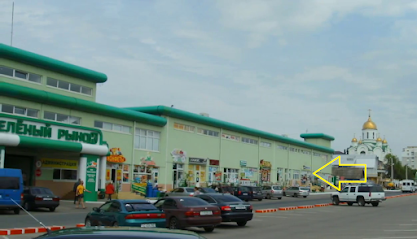
Аромагия
Explore the vibrant essence of Tiraspol at Аромагия, where unique Moldovan gifts and local crafts await every visitor.
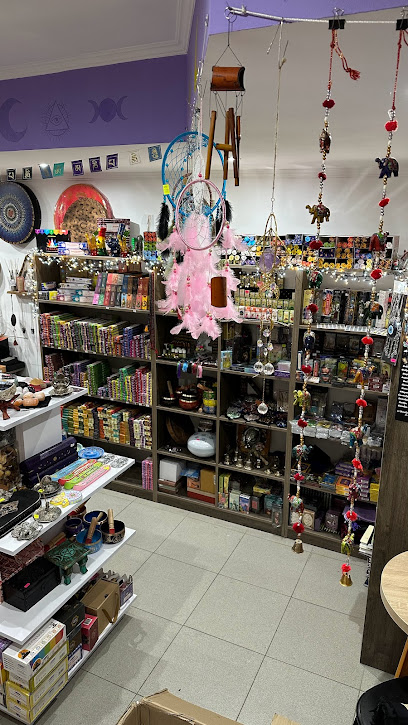
BAZAR SHOP
Explore stylish footwear and trendy clothing at BAZAR SHOP, Tiraspol's premier destination for fashion-forward shopping.

Антикварная лавка ПМР Тирасполь
Explore a unique gift shop in Tiraspol filled with vintage antiques and local treasures, perfect for finding memorable souvenirs.
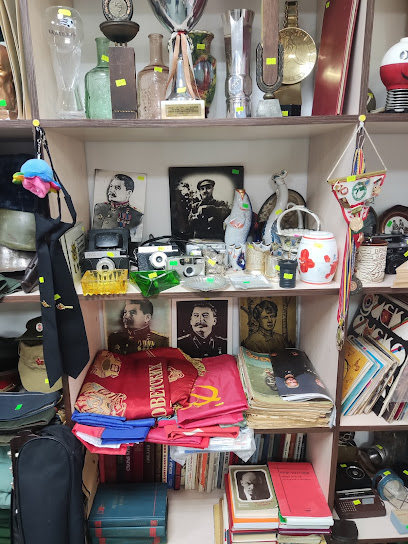
Friends&Family Market Оригинальная Одежда и Обувь
Explore original clothing and footwear at Friends&Family Market in Tiraspol, where local fashion meets unique style.

Mercado-магазин одежды
Explore Mercado in Tiraspol: A vibrant clothing store showcasing the best in local fashion and contemporary trends.

Essential bars & hidden hideouts
CRAFT
Experience the best of Tiraspol's culinary scene at CRAFT, a gastropub offering delectable dishes and an extensive craft beer selection.
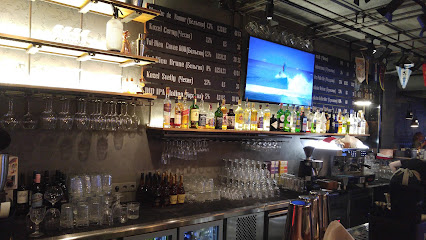
RustyLock Tiraspol
Discover the vibrant atmosphere of RustyLock Tiraspol, a premier hookah bar offering a wide selection of flavors and cocktails for a relaxing experience.
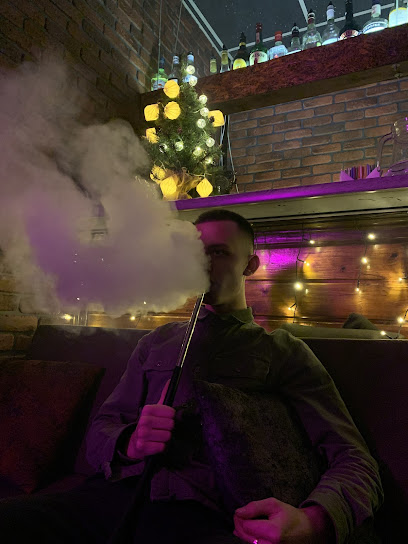
ReBroPub
Experience the vibrant essence of Tiraspol at ReBroPub, where local flavors and a lively atmosphere come together for an unforgettable night.
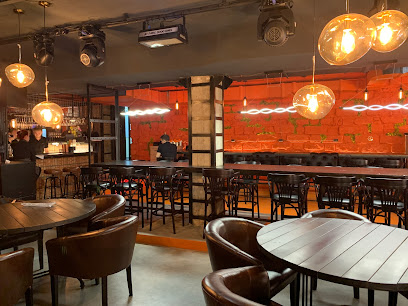
NataliЯ
Experience the vibrant nightlife of Tiraspol at NataliЯ, where refreshing drinks and a lively atmosphere await every visitor.
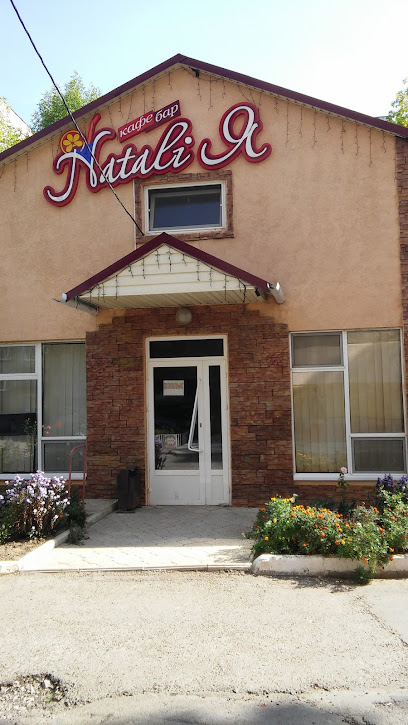
Skorpion
Skorpion Sports Bar in Tiraspol: Where sports, great food, and a vibrant atmosphere come together for an unforgettable experience.
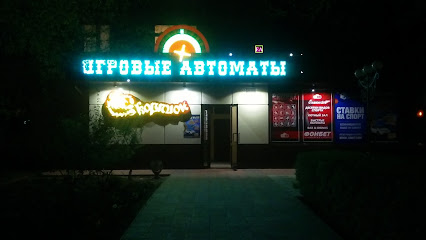
ЗВУК
Discover a unique blend of hookah, cocktails, and cinema at ЗВУК in Tiraspol, where relaxation meets entertainment in a stylish atmosphere.
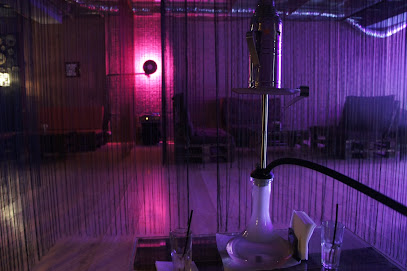
Beluga
Discover Tiraspol's lively live music scene at Beluga, a vibrant bar that offers unforgettable performances and an inviting atmosphere for all.
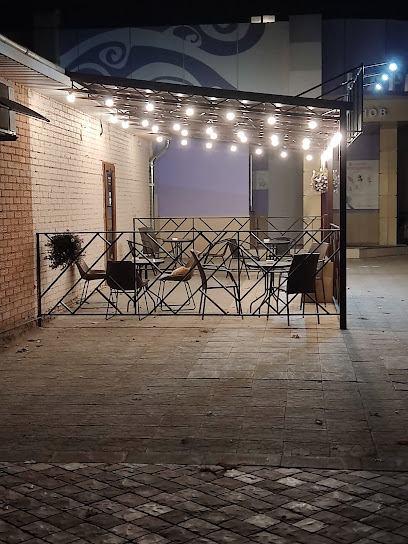
Гастроном Бородинский
Discover Гастроном Бородинский in Tiraspol: A delightful gastropub offering a unique blend of Moldovan and international cuisine in a cozy atmosphere.
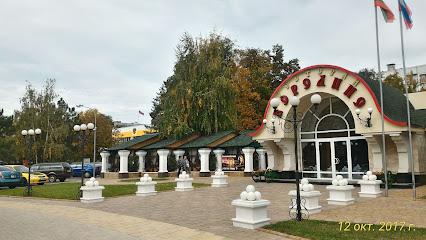
Колибри
Experience the vibrant atmosphere of Kolibri, Tiraspol's charming bar, where local flavors and friendly service create unforgettable moments.
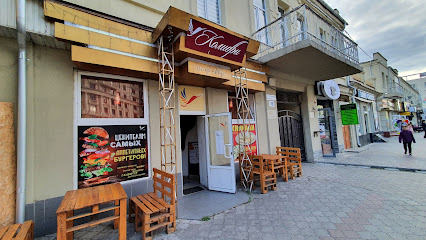
Вулкан Игровой Дом
Discover the lively nightlife of Tiraspol at Вулкан Игровой Дом, where locals and tourists gather for unforgettable moments.
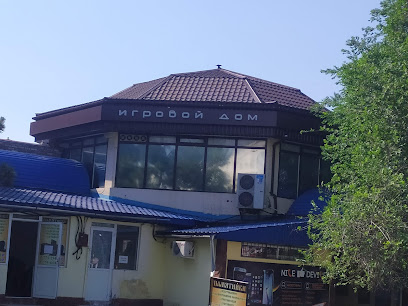
Локомотив
Explore Локомотив in Tiraspol, Moldova: a vibrant bar perfect for drinks, socializing, and experiencing local nightlife.

Мангал express - шашлык Тирасполь
Discover the rich flavors of Tiraspol at Мангал express, a bar specializing in authentic Moldovan shashlik and local wines.
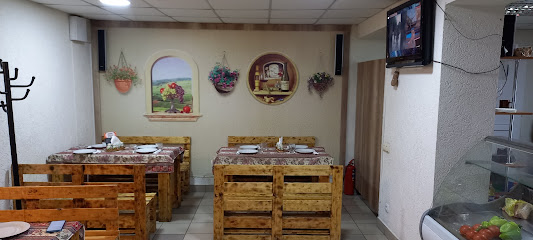
Атмосфера
Explore the lively atmosphere at Атмосфера, Tiraspol's top bar, where great drinks and good company await you.
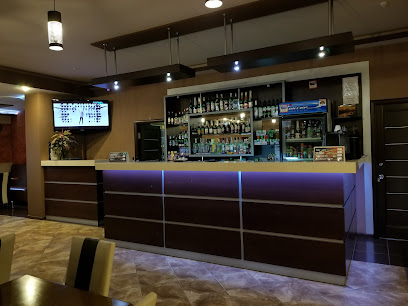
PLATFORM BAR
Experience the vibrant nightlife at PLATFORM BAR in Tiraspol; a cozy spot for drinks and socializing with a unique local flair.

Молдова
Experience the rich history and vibrant culture of Tiraspol, Moldova's captivating capital, where Soviet nostalgia meets modern charm.
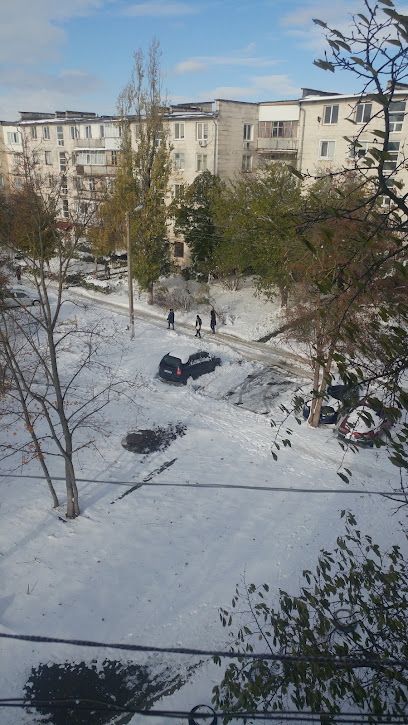
Local Phrases
-
- HelloПривет
[Pree-vyet] - GoodbyeДо свидания
[Da svidaniya] - YesДа
[Da] - NoНет
[Nyet] - Please/You're welcomeПожалуйста
[Pazhalusta] - Thank youСпасибо
[Spasibo] - Excuse me/SorryИзвините
[Izvinite] - How are you?Как дела?
[Kak dela?] - Fine. And you?Хорошо. А у вас?
[Khorosho. A u vas?] - Do you speak English?Вы говорите по-английски?
[Vy govorite po-angliyski?] - I don't understandЯ не понимаю
[Ya ne ponimayu]
- HelloПривет
-
- I'd like to see the menu, pleaseЯ бы хотел посмотреть меню, пожалуйста
[Ya by khotel posmotret menyoo, pazhalusta] - I don't eat meatЯ не ем мясо
[Ya ne yem myaso] - Cheers!Ваше здоровье!
[Vashe zdorovye!] - I would like to pay, pleaseЯ бы хотел заплатить, пожалуйста
[Ya by khotel zaplatit, pazhalusta]
- I'd like to see the menu, pleaseЯ бы хотел посмотреть меню, пожалуйста
-
- Help!Помогите!
[Pomogite!] - Go away!Уходите!
[Ukhodite!] - Call the Police!Вызовите полицию!
[Vyzovite politsiyu!] - Call a doctor!Вызовите врача!
[Vyzovite vracha!] - I'm lostЯ потерялся
[Ya poteryalsya] - I'm illУ меня болит
[U menya bolit]
- Help!Помогите!
-
- I'd like to buy...Я бы хотел купить...
[Ya by khotel kupit...] - I'm just lookingЯ просто смотрю
[Ya prosto smotryu] - How much is it?Сколько это стоит?
[Skol'ko eto stoit?] - That's too expensiveЭто слишком дорого
[Eto slishkom dorogo] - Can you lower the price?Можете уменьшить цену?
[Mozhete umenshit' tsenu?]
- I'd like to buy...Я бы хотел купить...
-
- What time is it?Сколько времени?
[Skol'ko vremeni?] - It's one o'clockОдин час
[Odin chas] - Half past (10)Половина десятого
[Polovina desyatogo] - MorningУтро
[Utro] - AfternoonДень
[Den'] - EveningВечер
[Vecher] - YesterdayВчера
[Vchera] - TodayСегодня
[Segodnya] - TomorrowЗавтра
[Zavtra] - 1Один
[Odin] - 2Два
[Dva] - 3Три
[Tri] - 4Четыре
[Chetyre] - 5Пять
[Pyat'] - 6Шесть
[Shest'] - 7Семь
[Sem'] - 8Восемь
[Vosem'] - 9Девять
[Devyat'] - 10Десять
[Desyat']
- What time is it?Сколько времени?
-
- Where's a/the...?Где находится...?
[Gde nakhoditsya...?] - What's the address?Какой у вас адрес?
[Kakoy u vas adres?] - Can you show me (on the map)?Вы можете показать мне (на карте)?
[Vy mozhete pokazat' mne (na karte)?] - When's the next (bus)?Когда следующий (автобус)?
[Kogda sleduyushchiy (avtobus)?] - A ticket (to ....)Билет (до ...)
[Bilyet (do ...)]
- Where's a/the...?Где находится...?
History of Tiraspol
-
Tiraspol was founded in 1792 by the Russian General Alexander Suvorov as a fortress on the Dniester River. As part of the Russian Empire's expansionist policies, Tiraspol was strategically important for securing the newly acquired territories from the Ottoman Empire.
-
During the 19th century, Tiraspol grew from a military outpost into a small town. It became part of the Bessarabia Governorate after the 1812 Treaty of Bucharest, which formalized the transfer of the territory from the Ottoman Empire to Russia. The town saw development of infrastructure and increased trade activities.
-
After World War I, Tiraspol became a part of the Moldavian Autonomous Soviet Socialist Republic (MASSR) within the Ukrainian SSR in 1924. This period saw significant industrialization and the promotion of Soviet policies, impacting the local culture and demographics.
-
During World War II, Tiraspol was occupied by Axis forces between 1941 and 1944. The town experienced devastation and significant loss of life, particularly among its Jewish population due to the Holocaust. It was liberated by Soviet forces in 1944.
-
Post-World War II, Tiraspol became an important industrial center within the Moldavian SSR. The city saw rapid urbanization, with the establishment of factories and the construction of Soviet-style apartment blocks. This period also saw the promotion of Soviet culture and the Russification of the local population.
-
Following the dissolution of the Soviet Union in 1991, Tiraspol became the capital of the self-proclaimed Pridnestrovian Moldavian Republic (Transnistria), which declared independence from Moldova. This led to a brief but violent conflict in 1992, resulting in a ceasefire that left Transnistria as a de facto independent region, although it is not recognized by any UN member state.
-
Today, Tiraspol stands as a city with a unique blend of Soviet heritage and modern influences. It is characterized by its wide boulevards, Soviet-era monuments, and a sense of lingering nostalgia for the Soviet past. Despite its unrecognized status, Tiraspol functions with its own government and institutions, maintaining a distinct identity within the region.
Tiraspol Essentials
-
Tiraspol is located in the breakaway region of Transnistria in Moldova. The closest international airport is Chișinău International Airport, approximately 70 kilometers away. From Chișinău, you can take a bus or a marshrutka (minibus) to Tiraspol. The journey typically takes around 1.5 to 2 hours by road. There are also train services available from Chișinău to Tiraspol, offering a scenic route through the Moldovan countryside.
-
Tiraspol is a compact city, and many of its attractions are within walking distance. For longer trips within the city, local taxis are readily available and relatively inexpensive. Public buses and marshrutkas operate within Tiraspol and connect to nearby villages. Renting a car is also an option, but be aware of the local driving conditions and regulations.
-
The official currency in Tiraspol is the Transnistrian ruble. Credit cards are not widely accepted, so it is advisable to carry cash. There are ATMs available in Tiraspol where you can withdraw Transnistrian rubles, but it is wise to bring some cash in Moldovan leu or US dollars to exchange upon arrival.
-
Tiraspol is generally a safe destination for tourists, but it is important to exercise standard precautions. Avoid walking alone at night in unfamiliar areas and keep an eye on your belongings in crowded places. While there are no specific high-crime areas targeting tourists, staying vigilant and aware of your surroundings is always recommended.
-
In case of emergency, dial 102 for police assistance, 103 for medical emergencies, and 101 for fire emergencies. Tiraspol has local police stations and medical facilities available. It is recommended to have travel insurance that covers medical emergencies. Pharmacies are available in the city for over-the-counter medications.
-
Fashion: Do dress modestly, especially when visiting religious sites. Avoid wearing overly revealing clothing. Religion: Do respect local customs and traditions. Cover your head when entering churches and monasteries. Public Transport: Do be respectful and give up your seat to elderly passengers. Don't eat or drink on public transport. Greetings: Do greet people with a handshake. A slight nod of the head can also be a sign of respect. Eating & Drinking: Do try local delicacies and accept food offerings graciously. Don't refuse hospitality, as it is considered impolite.
-
To experience Tiraspol like a local, visit the local markets where you can buy fresh produce and traditional goods. Engage with locals, as they are often friendly and willing to share stories about the city's history and culture. Don't miss visiting the House of Soviets, the Tiraspol National History Museum, and the Suvorov Monument. For a unique experience, take a stroll along the Dniester River and enjoy the local parks.
Trending Landmark in Tiraspol
-
Suvorov Monument
-
Monument to Aviators
-
60 Years of October Square
-
Tank Monument
-
Victory Park
-
Ruinele Cetății de Tiraspol
-
The Christmas/Nativity Cathedral
-
The Monument to the Liberators of the City
-
Lenin Monument
-
Monument to Kotovsky
-
Zelinsky Museum
-
Catherine the Great Monument
-
The Memorial of Glory
-
Harry Potter Monument
-
Lenin Monument of Dom Sovietov
Nearby Cities to Tiraspol
-
Things To Do in Chișinău
-
Things To Do in Orhei
-
Things To Do in Iasi
-
Things To Do in Focsani
-
Things To Do in Kherson
-
Things To Do in Suceava
-
Things To Do in Kropyvnytskyi
-
Things To Do in Vinnytsia
-
Things To Do in Constanta
-
Things To Do in Kryvyi Rih
-
Things To Do in Chernivtsi
-
Things To Do in Brasov
-
Things To Do in Cherkasy
-
Things To Do in Khmelnytskyi
-
Things To Do in Sighisoara



